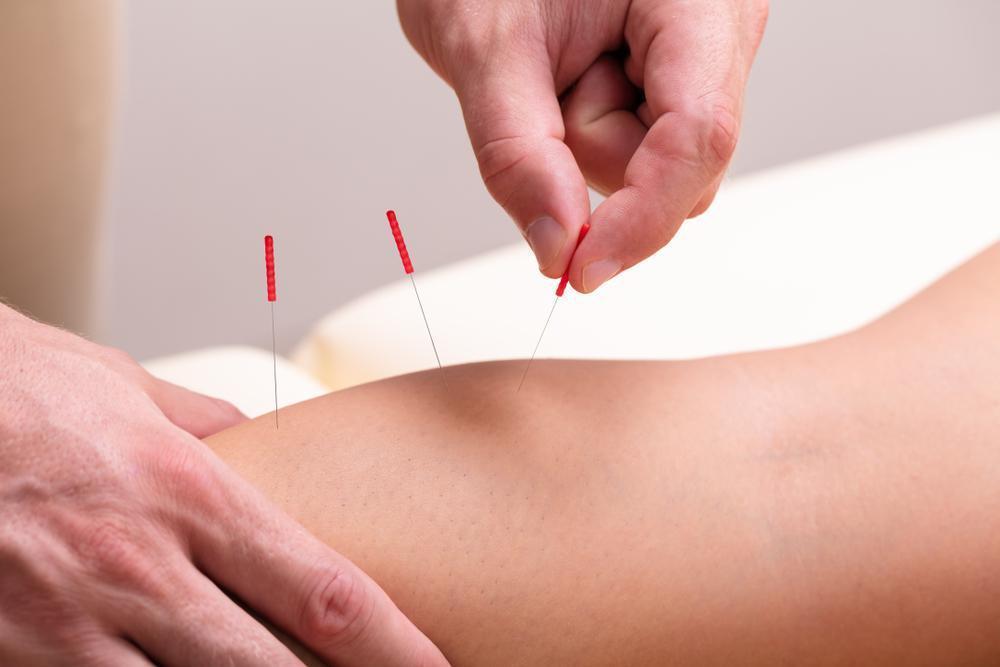- About Us
- Departments & Services
- Clinicians
- Patient & Visitor Guide
- Community
- Contact Us
Close

Dry Needling: What You Need to Know and How it Can Benefit You
(Article by Aaron Cooper, senior physiotherapist)
Keywords: Physiotherapy, Physiotherapy techniques, Dry needling, Dry needling Safety, Dry needling benefits, Risks of dry needling
Dry needling is a popular treatment technique used in physiotherapy and has grown in popularity over the last few years, But whilst many people have experienced firsthand the effectiveness of dry needling, many more are curious and yet hesitant to try it out. In this article, we will look into the myriad of dry needling benefits, the cases, and conditions where it becomes most useful, and ponder potential risks associated with it.
What is Dry Needling?
Dry needling physiotherapy is a therapeutic technique that involves inserting needles into specific points of the body, known as trigger points or myofascial trigger points. The goal of dry needling treatment is to relieve pain and improve range of motion by releasing tension in the muscles, reducing inflammation, and promoting the body's natural healing process. dry needling technique is often used in conjunction with other physiotherapy techniques, such as exercise, manual therapy, soft tissue release, and therapeutic modalities such as electrotherapy or ultrasound.
Dry needling is different from acupuncture, which is a traditional Chinese medicine technique that involves inserting needles into specific points along the body's meridians to balance the body's energy flow. When it comes to dry needling vs acupuncture, while the basic concept of needle insertion is the same, the philosophy and approach behind the two techniques are different.
The History and Evolution of Dry Needling
dry needling in physiotherapy has its roots in Western medicine and was first introduced in the 1940s by Dr. Janet Travell, a physician who specialized in pain management. Dr. Travell used a technique called "trigger point injections" to treat chronic pain in her patients. The dry needling technique involved injecting a small amount of local anesthetic into the trigger points to relieve pain and reduce inflammation.
In the 1970s, Dr. Chan Gunn, a Canadian physician, further developed the technique and called it "intramuscular stimulation" (IMS). He refined the technique by using a finer needle and inserting it into the muscle tissue without injecting any substance. This technique was later renamed "dry needling" to differentiate it from trigger point injections that involve the injection of a substance into the trigger point.
The Difference between Acupuncture and Dry Needling
Acupuncture and dry needling both involve needle insertion, but they differ in their approach and philosophy. The difference between dry needling and acupuncture lies in a few core aspects. Acupuncture is based on traditional Chinese medicine principles, which view the body as a whole and aim to restore the balance of energy flow (Qi) in the body. Acupuncture needles are usually inserted along the body's meridians, which are believed to be pathways of energy flow.
Dry needling, on the other hand, is based on Western medicine principles and focuses on the musculoskeletal system. Dry needling needles are inserted into trigger points or myofascial knots, which are areas of tightness and tension in the muscles. The goal of dry needling is to release tension in the muscles, reduce pain, and improve the range of motion.
The Benefits of Dry Needling
Dry needling has several benefits for people with chronic pain or musculoskeletal disorders:
Pneumothorax: Pneumothorax is a rare but serious complication that can occur if the needle punctures the lung. This is more likely to occur if the needle is inserted too deeply or in the wrong location. At Fawzia Sultan Healthcare Network, our physiotherapists have undergone extensive training in dry needling and understand the safest locations and needling techniques that reduce risk to the minimum amount possible. However, your physiotherapist will discuss potential risks with you before starting any dry needling treatment.